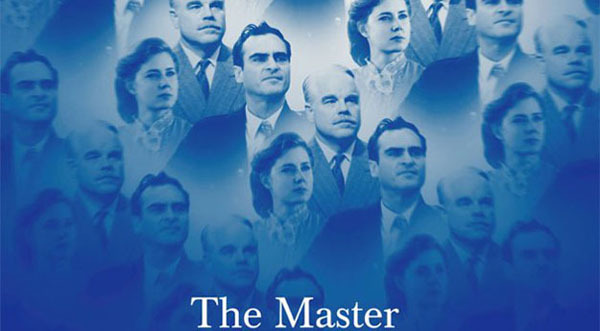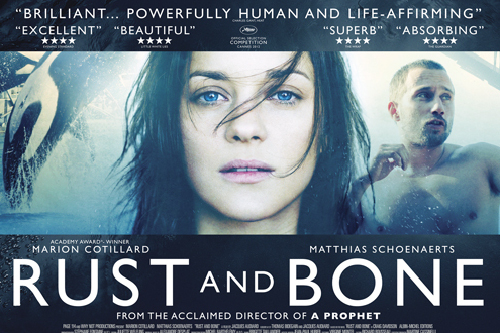The Character of New York City in Joseph Von Sternberg's masterpiece The Docks of New York.
The use of setting can be vital in reinforcing or enhancing a film’s narrative. It can be a source of an infinite amount of ideas and details that can help tell a story move vividly, in many regards, if used appropriately the setting can become a key character itself. In this way the city of New York has had a long standing relationship with film beginning as early as 1908 with The Thieving Hand moving through to 1928’s The Jazz Singer which, released in the same week, eclipsed Sternberg’s movie. But The Docks of New York represents an important development in such a tradition; it shifts the action to the compact New York harbor, buzzing with atmospheric chaos to disguise harsh realities, it is a working-class love story for the city’s waterfront.
Here director Josef von Sternberg utilizes the city backdrop as a key role in the blue-collar romance between stoker Bill Roberts and wounded ‘good-time-girl’ Mae. Much more than a setting, it becomes a pivotal character and perhaps an omnipotent entity in the story through Sternberg’s set design, mise-en-scene and cinematography.
New York is a 20th Century Gomorra, a melting pot of differing culture, class, religion and race. Much of the story takes place in the local bar, Sternberg compacts people together, with little room to breath. This creates an atmosphere of uncertain intensity, dangers do lie in the docks inhabitants; rapists, thieves and murderers - and the crowded set design often takes queues from Dicken’s London enhancing the immorality but also isolating the docks, allowing them to have a structure of their own being. Sternberg rarely frames his actors with a static background. More often than not the party rages around them, as New York does not stop for the actions of few. This allows the brief moments of stillness shared between the characters to become more intimate. The people of New York bubble with a destructive vitality. Docks is also an observed social commentary, as dances and skirmishes make up the nights entertainment, as an outlet for it’s inhabitants own personal anguish. There is little distinguish their dancing with the random bursts of violence, their movements are filled with a harsh rhythm and weighted gestures. They are hive mind, acting without independent thought and moving in mass towards each spectacle. Note the wedding sequence in which all spectators and witnesses raise their hand in mock protest or flock to the scene of the murder when Andy is shot by his wife Lou. But these are moments of induced euphoria brought upon by the spell cast by the harbor’s thick fog. And it is through this audacious night, that this tough, realistic romance becomes an honest and delicate contrast.
Sternberg’s waterfront is more than just a player, it is a manipulator. It not only observes everything, but is itself everything. It’s stage is laid out how it see’s fit, the people involved become it’s performers. We can attest to this with how we witness Mae’s attempted suicide; a reflection in the water - it is the city who entices not only Mae but us the viewers as well. Another reflection comes in the form of the two supporting characters Andy and Lou, who mimic Mae and Bill not just physically, but also emotionally, they are not just a reflection of things that (could) come, but a warning sent by the city to be heeded. One can not help but feel that our character’s hands have been guided slightly as the harbor’s design unfolds to their needs. Here the city becomes... not so much reflective of the characters, but actively partaking in their story. The fog that settles over the dockside softens lights and hides edges. It becomes a hazily romantic as Mae and Bill look out over the lock. The simple bedroom the two share at night is the blank slate that the two needed. However when morning comes Sternberg shoots it with a harsh light, exposing the cracks, outside New York’s humdrum of activity has been reduced to the murmur of manual labor, the romanticized fog has now been replaced with the black smoke from a ships funnel, as if the city itself has turned its’ attention away from our characters and back to the mundane, cruel realities of life.
We are but a witness in one night of New York here, these people do not exist for us, but for themselves and the city. Bill and Mae’s story is just one of many thousands. This is presented so perfectly in the film’s final shot, as the camera pulls back through the courtroom and our two protagonists stand frozen together for just a moment, meanwhile the next case begins around them. Sternberg’s New York will not allow us to hear their story, not this time, and it pushes us out to the exit and the film draws to a close.
The Docks of New York is a film about people, that just so happens to star a city. Sternberg utilizes a lot of cinematic techniques in order to personify the city, such as it’s free flowing choreography, the mass of people who populate the area as the cities life force. Or the directed and compact layout that give a sense of a living entity, one that has the ability to change it’s own image for the needs of the players. And with his camera, which traverses the docks searching delicate beauty amongst the harsh reality, only to linger on it for a moment. It is a world of chaos, perhaps even lost in time. A world that would have it’s own role to play in the stories of everyone who would come to pass there.
Here director Josef von Sternberg utilizes the city backdrop as a key role in the blue-collar romance between stoker Bill Roberts and wounded ‘good-time-girl’ Mae. Much more than a setting, it becomes a pivotal character and perhaps an omnipotent entity in the story through Sternberg’s set design, mise-en-scene and cinematography.
New York is a 20th Century Gomorra, a melting pot of differing culture, class, religion and race. Much of the story takes place in the local bar, Sternberg compacts people together, with little room to breath. This creates an atmosphere of uncertain intensity, dangers do lie in the docks inhabitants; rapists, thieves and murderers - and the crowded set design often takes queues from Dicken’s London enhancing the immorality but also isolating the docks, allowing them to have a structure of their own being. Sternberg rarely frames his actors with a static background. More often than not the party rages around them, as New York does not stop for the actions of few. This allows the brief moments of stillness shared between the characters to become more intimate. The people of New York bubble with a destructive vitality. Docks is also an observed social commentary, as dances and skirmishes make up the nights entertainment, as an outlet for it’s inhabitants own personal anguish. There is little distinguish their dancing with the random bursts of violence, their movements are filled with a harsh rhythm and weighted gestures. They are hive mind, acting without independent thought and moving in mass towards each spectacle. Note the wedding sequence in which all spectators and witnesses raise their hand in mock protest or flock to the scene of the murder when Andy is shot by his wife Lou. But these are moments of induced euphoria brought upon by the spell cast by the harbor’s thick fog. And it is through this audacious night, that this tough, realistic romance becomes an honest and delicate contrast.
Sternberg’s waterfront is more than just a player, it is a manipulator. It not only observes everything, but is itself everything. It’s stage is laid out how it see’s fit, the people involved become it’s performers. We can attest to this with how we witness Mae’s attempted suicide; a reflection in the water - it is the city who entices not only Mae but us the viewers as well. Another reflection comes in the form of the two supporting characters Andy and Lou, who mimic Mae and Bill not just physically, but also emotionally, they are not just a reflection of things that (could) come, but a warning sent by the city to be heeded. One can not help but feel that our character’s hands have been guided slightly as the harbor’s design unfolds to their needs. Here the city becomes... not so much reflective of the characters, but actively partaking in their story. The fog that settles over the dockside softens lights and hides edges. It becomes a hazily romantic as Mae and Bill look out over the lock. The simple bedroom the two share at night is the blank slate that the two needed. However when morning comes Sternberg shoots it with a harsh light, exposing the cracks, outside New York’s humdrum of activity has been reduced to the murmur of manual labor, the romanticized fog has now been replaced with the black smoke from a ships funnel, as if the city itself has turned its’ attention away from our characters and back to the mundane, cruel realities of life.
We are but a witness in one night of New York here, these people do not exist for us, but for themselves and the city. Bill and Mae’s story is just one of many thousands. This is presented so perfectly in the film’s final shot, as the camera pulls back through the courtroom and our two protagonists stand frozen together for just a moment, meanwhile the next case begins around them. Sternberg’s New York will not allow us to hear their story, not this time, and it pushes us out to the exit and the film draws to a close.
The Docks of New York is a film about people, that just so happens to star a city. Sternberg utilizes a lot of cinematic techniques in order to personify the city, such as it’s free flowing choreography, the mass of people who populate the area as the cities life force. Or the directed and compact layout that give a sense of a living entity, one that has the ability to change it’s own image for the needs of the players. And with his camera, which traverses the docks searching delicate beauty amongst the harsh reality, only to linger on it for a moment. It is a world of chaos, perhaps even lost in time. A world that would have it’s own role to play in the stories of everyone who would come to pass there.










